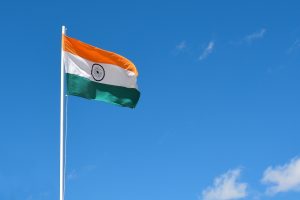On August 9, 2021, while presiding over a high-level discussion on maritime security, Indian Prime Minister Narendra Modi stressed the value of security cooperation in the Indian Ocean Region (IOR). Less than three years later, on February 29, 2024, India demonstrated its commitment to the cause as Modi and his Mauritian counterpart, Pravind Jugnauth, jointly inaugurated a new airstrip and jetty along with six India-assisted development projects at Agalega Island, Mauritius.
At 1,100 kilometers north of the main island of Mauritius, the location of Agalega is strategically significant. The island shares borders with Seychelles to the north; the Maldives and the Chagos Islands (including the U.S. base at Diego Garcia) in the east; and Madagascar, the Mozambique Channel, and the entire eastern coast of Africa to the west. Consisting of two islands, Agalega is also part of a 2.3 million square kilometer exclusive economic zone (EEZ). Nevertheless, this strategically located island is vulnerable to increasing piracy attacks and forays by Chinese warships.
The idea of this infrastructure was initially conceived in 2005. Later, during Modi’s 2015 visit to Mauritius, India formalized the plan to establish, develop, and refurbish the island’s infrastructure. This included improving the 10,000-foot runway to accommodate large commercial aircraft. Along with these projects, the plan called for building a port close to the current jetty, building institutions for intelligence and communications facilities, and installing a transponder system to identify ships traveling through the Indian Ocean. However, local protests broke out with accusations that the Mauritian government was compromising national security with the deals.
Despite the protests, construction commenced in 2019. Now that the infrastructure is operational, India has reaffirmed its commitment to enhance regional maritime security.
In a sense, India has come out of the closet to engage with the larger Indian Ocean Region, underscoring the importance of the security dimension as a strategic interest. Given the prominence of the region to world trade, nations including the United States, France, the United Kingdom, and China are all deploying an ever-increasing number of warships in the region.
In 2015, India unveiled its Security and Growth for All in the Region (SAGAR) policy to strengthen its maritime capabilities and enhance its presence in the Indian Ocean Region. Following this vision, India aims to take its economic and security cooperation with its maritime partners further and help them improve their maritime security capabilities. In keeping with the SAGAR ethos, the recently completed projects will be essential to combating piracy, terrorism, and the illicit drug trade in the vicinity of Agalega. Improving sea and air connectivity will also contribute to the betterment of the 300-odd residents of the island. Finally, it will make the refueling of Indian ships from Agalega easier. In light of the recent Maldives incident, where Indian military forces were asked to leave the island nation, the importance of the infrastructure in Mauritius becomes even more crucial for India.
Considering the fierce battle over influence in the region, this infrastructure will also help India, to some extent, challenge China’s rapid expansion in the region. Since 2017 China has maintained a naval military base in Djibouti on the Horn of Africa. Currently, India possesses about 130 warships, which is only a third of China’s maritime fleet. China has the world’s largest maritime fleet at 350 ships and submarines. Furthermore, the majority of Indian submarines, which are vital to controlling the oceans, are archaic.
Multiple plans to expand the warship fleet to 200 ships, including a third aircraft carrier, are continually getting pushed back. The infrastructure in Mauritius may allow India to establish itself as the region’s net security provider despite these limitations. India would be able to deploy large P-8Is from the new airstrip. India has previously stationed these larger fleets on France’s Reunion Island under an existing logistics exchange agreement.
As India continues to increase its influence in the region, surely, in the future, it will face increased challenges from China. Therefore, India must exercise caution against the rising Chinese influence that would potentially reduce India’s influence over the region. India must aspire to achieve the right balance in naval cooperation and competition. The partnerships with France and the United States will be crucial in this regard.
India must tread carefully in order to ensure that it firmly establishes its role as a net security provider in the region while maintaining the pre-eminence of Indian Navy maritime dominance. As China continues to flex its muscles in the Indian Ocean influence war, multi-aligned cooperation will be key for India to emerge as a prominent maritime power and the voice of the Global South.

































